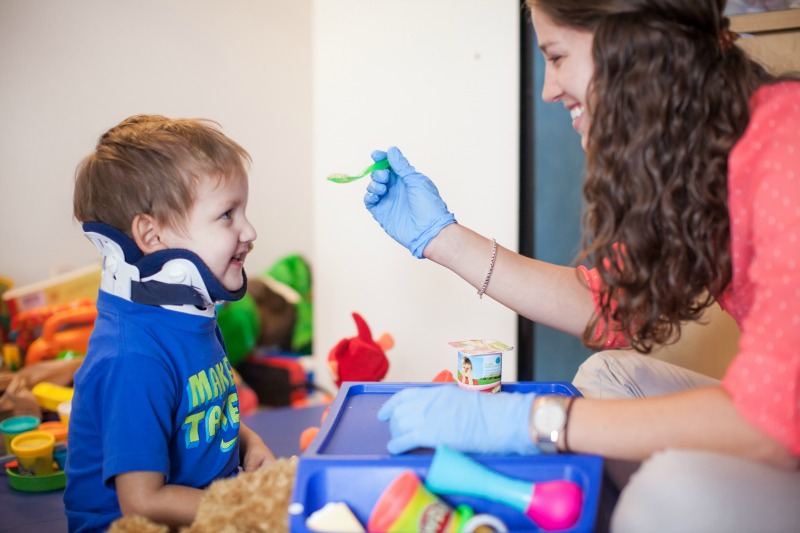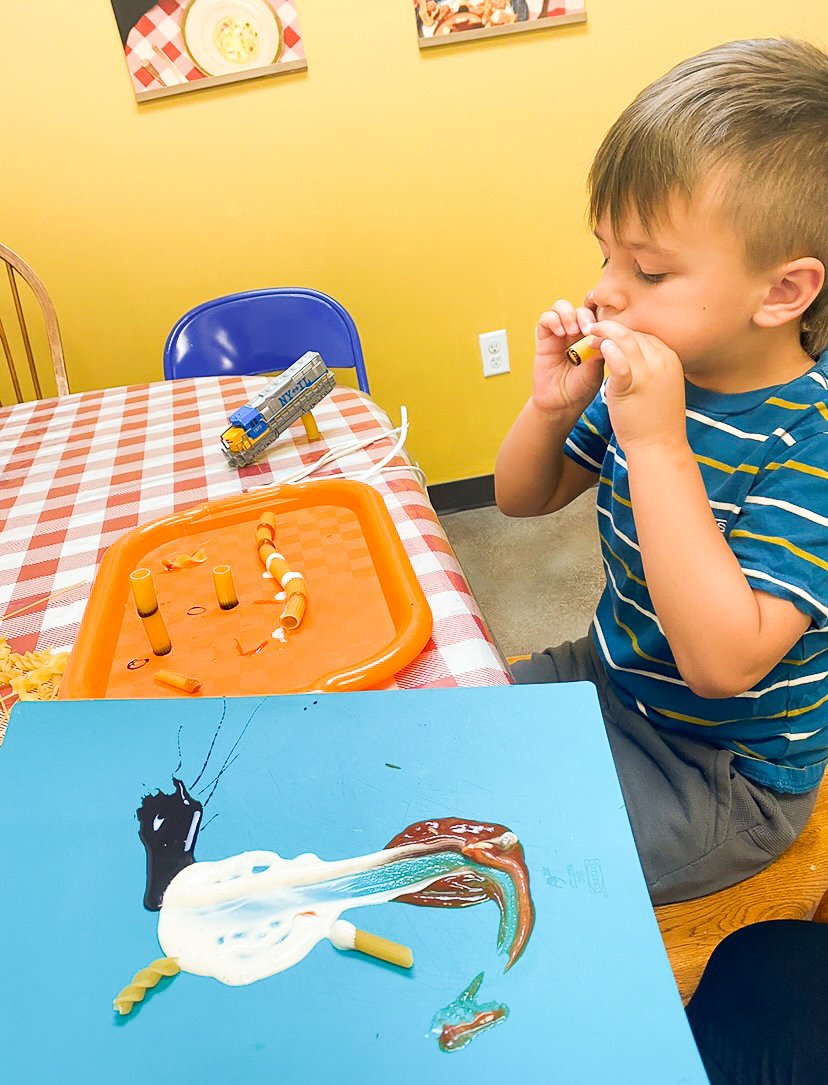Professional Support for Food Aversion Therapy Long Island
Wiki Article
Navigating the Course to Successful Feeding: Innovative Methods and Treatments for Effective Feeding Therapy
Are you struggling to discover reliable approaches and interventions for effective feeding treatment? Look no more. This write-up will certainly guide you through the path to success, giving ingenious strategies to assess feeding challenges and set achievable objectives. With evidence-based approaches, you'll discover exactly how to resolve sensory handling problems and make use of assistive modern technology and flexible equipment. And also, we'll show you the value of teaming up with family members and caregivers for ideal feeding end results. Prepare to browse the course to effective feeding!Assessing Feeding Difficulties and Determining Objectives
You ought to start by examining your youngster's feeding difficulties and recognizing particular goals for their treatment. This action is vital in developing an effective feeding therapy strategy. Begin by observing your youngster's feeding behaviors and patterns. Search for any hostilities or difficulties they might have in the direction of specific foods or appearances. Keep in mind of any kind of physical or sensory problems that might be affecting their ability to eat. As soon as you have recognized these challenges, you can then establish certain goals for their treatment. These goals must be achievable and reasonable, concentrating on enhancing your child's feeding skills and general nourishment. As an example, you may establish an objective for your youngster to be able to tolerate a bigger range of structures or to self-feed with utensils. It is necessary to interact these objectives with your child's feeding therapist so they can tailor the therapy sessions to resolve these details challenges. By examining your child's feeding challenges and setting objectives, you are taking the initial step in the direction of aiding them establish successful feeding abilities.Applying Evidence-Based Strategies for Feeding Therapy
Carrying out evidence-based methods for feeding treatment can cause positive end results for children. You are ensuring that the treatments utilized are sustained by scientific research study and have actually been confirmed effective when you incorporate these approaches into your youngster's therapy plan. This strategy boosts the chance of success and aids resolve the particular feeding difficulties your child may be experiencing.By adhering to evidence-based strategies, you can provide your youngster with the very best possible care and assistance. These methods may include using a selection of sensory experiences throughout nourishments, such as checking out different appearances and flavors, to motivate acceptance of new foods. Furthermore, executing therapy techniques can help deal with choosy consuming habits and advertise much healthier eating patterns.
One more essential aspect of evidence-based feeding treatment is entailing the family members in the treatment procedure. By giving education and assistance to moms and dads and caretakers, they can play an energetic function in assisting their kid overcome feeding challenges. This collaborative method boosts the performance of therapy and advertises enduring positive adjustments in your child's eating practices.

Addressing Sensory Processing Issues in Feeding Therapy
Dealing with sensory processing concerns in feeding therapy can be challenging, but it is necessary for promoting a positive consuming experience for youngsters. When you run into a child with sensory handling difficulties throughout mealtime, it is important to recognize that their responses to specific appearances, tastes, smells, or even sounds are not willful (food therapist farmingdale). By recognizing and dealing with these problems, you can help create a helpful setting that encourages healthy consuming habits
This technique enables the child to become acquainted with the food and its sensory properties at their very you could try here own rate. In addition, supplying a range of tastes and structures can aid desensitize their sensory system and expand their food preferences.
Involving the youngster in sensory play tasks can likewise be helpful. Motivate them to check out different textures, such as squishing, squeezing, or touching numerous food things. This can assist stabilize sensory input and lower hostilities to certain structures.
Another vital aspect is offering a calm and structured eating atmosphere. Minimize diversions, such as loud noises or bright lights, which can overwhelm their senses and impede their capability to focus on eating. Creating a predictable regular and making use of aesthetic timetables can likewise help the youngster feel more protected and in control throughout mealtime.

Utilizing Assistive Technology and Adaptive Devices
Making use of assistive modern technology and flexible tools can greatly improve the feeding experience for youngsters with sensory processing troubles. Mealtime can be difficult and frustrating when you have difficulty with sensory processing. Yet with the right tools, you can make it a much more delightful and effective experience.One choice is making use of specialized plates and tools designed to suit your needs. These utensils may have textured takes care of or a larger hold, making them much easier to adjust and hold. Plates with split areas can assist separate different foods and stop them from touching, which can be a resource of discomfort for some youngsters.
In addition to specialized plates and utensils, there are also assistive devices that can be utilized during feeding. For instance, a heavy vest or lap pad can supply deep stress input, assisting to relax and control your sensory system. A shaking toothbrush or chewable jewelry can give oral sensory stimulation, making the act of consuming much more satisfying.
Innovation can additionally play a function in enhancing the feeding experience. There are tools and applications readily available that can supply auditory or visual signs, such as timers or triggers, to aid you stay concentrated and organized throughout nourishment.
Working Together With Family Members and Caregivers for Effective Feeding Outcomes
When teaming up with caregivers and households, you can work with each other to develop a nurturing and encouraging setting for successful feeding end results. By involving family members and caretakers in the feeding treatment procedure, you can get beneficial understandings right into the kid's feeding practices, choices, and difficulties. feeding therapy long island. This partnership permits an all natural technique to feeding treatment, dealing with not just the physical facets but also the emotional and psychological elements that may affect a kid's feeding capacitiesOne key facet of teaming up with caregivers and family members is supplying education and training. By furnishing them with expertise and abilities, they continue reading this can actively take original site part in the feeding treatment process and sustain the child's progression outside of treatment sessions. This can consist of teaching them feeding strategies, approaches for managing mealtime behaviors, and comprehending the significance of consistency and regimen in developing healthy and balanced eating routines.
Additionally, entailing households and caretakers in objective setting and therapy preparation makes sure that their viewpoints and objectives for the youngster are thought about. By collaborating, you can develop realistic and achievable goals that line up with the household's priorities and values - food aversion therapy long island. This collective strategy promotes a sense of ownership and empowerment, producing a strong structure for successful feeding results
Furthermore, open and normal communication with caregivers and families is important for effective collaboration. By preserving continuous dialogue, you can deal with worries, offer assistance, and make required modifications to the feeding treatment strategy as required. This communication likewise enables sharing progress updates, celebrating achievements, and recognizing any type of obstacles or barriers that may arise.

Conclusion
You have explored various strategies and treatments for reliable feeding therapy, such as examining obstacles, implementing evidence-based techniques, attending to sensory handling concerns, and using assistive modern technology. Keep in mind to always stay ingenious and aggressive in your technique to feeding therapy.It's vital to interact these goals with your child's feeding therapist so they can tailor the therapy sessions to address these specific challenges.Executing evidence-based methods for feeding therapy can lead to favorable outcomes for kids.Resolving sensory handling concerns in feeding therapy can be tough, but it is important for promoting a positive consuming experience for youngsters. By involving families and caretakers in the feeding therapy process, you can obtain important understandings into the youngster's feeding practices, challenges, and choices. By equipping them with expertise and skills, they can actively participate in the feeding therapy process and support the kid's development outside of treatment sessions.
Report this wiki page